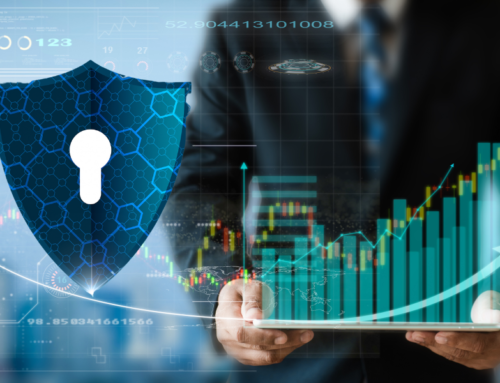When I say cities of the future, what do you imagine? If you are imagining flying cars and teleportation instead of transportation, hold your horses then. Cities of the future are the same cities we live in, only smarter. Smarter how? You may ask. Smart cities mean that the cities of the future will rely on IoT for better management of resources and security of the city dwellers, among other things.
Internet of Things (IoT) refers to the use of smart devices that talk to each other through a single network or multiple networks. By talk, I mean sharing data with each other. This data will help the city management or the government in better planning and use of the resources. But is that even necessary? Absolutely, it is. Urbanization has been rapidly increasing since the beginning of the 21st century. It is predicted that 66% of the world’s population will be living in major cities by the year 2050. For comparison, only 39% of the world’s population lived in cities in 1980. The number of smart devices connected to the IoT is also increasing and is expected to reach 75.44 billion devices by next year.
The Role of IoT in Cities of The Future
Interconnectivity is one of the building blocks for the cities of the future. Citizens and governments will connect in ways we’ve never seen before. IoT plays a huge role in shaping the cities of the future, from resource management to enhanced security and efficient urban mobility, the opportunities are limitless and bound by only technology. And as the technology will improve so will the use of IoT in smart cities.
Now, you might be wondering, how exactly does IoT shape the cities of the future? Well, let’s have a look.

“Urban planning enhanced by IoT technology for better future city living.”
1- Smart Infrastructure
IoT will help cities install devices and sensors that collect data on the condition of roads, bridges, buildings, and other assets. This data will then be used for monitoring and preventing accidents, optimizing maintenance, and enhancing the overall safety of the citizens.
One of the major advantages of using IoT in this regard is that it will allow real-time monitoring of the structural integrity of critical assets. This will facilitate timely maintenance of structures such as bridges or buildings. For example, the IoT sensors placed on bridges are able to identify any structural changes. They then relay this information to a central system where the authorities can be notified. According to the data received from the IoT devices on the bridge, the authorities can develop a plan to resolve the problem if any.
2- Connected Transportation
Intelligent transportation systems can be created using IoT for the cities of the future. Sensors on roads and in vehicles gather information on road conditions, traffic, and public transport occupancy. This helps reduce traffic congestion, lower emissions, and improve the efficiency of public transportation.
One such use can be noticed in the city of Helsingborg, which is one of the many cities in Sweden to use Actibump. Actibump is a smart speed bump that is only activated when a car is over the speed limit. If the car is under the speed limit, the bump will not be activated and the car will sail smoothly over it. Some cities around the world also employ speed bumps that can increase or decrease their heights according to the height of the approaching vehicle.
Apart from this, IoT will revolutionize the way cities approach public transportation. Smart bus stops with real time arrival information and mobile apps that provide public transport updates will help reduce carbon emissions in smart cities. Promoting a healthier living environment.
3- Efficient Energy Consumption
Smart cities use IoT for efficient energy consumption. IoT sensors control lighting, climate systems, other energy consuming devices, reducing costs and environmental impacts. One key area where IoT can make a significant impact is the consumption of energy within buildings. Residential building management can employ smart thermostats that can reduce or increase temperatures automatically based on occupancy and weather conditions.
Similarly, smart lighting systems can also be employed that can adapt to natural lights and occupancy patterns, ensuring that the lights are only on when needed. These energy efficient solutions will not only reduce utility costs but also reduce greenhouse gas emissions in the long run.
4- Security and Monitoring
Video surveillance, motion sensors, and real-time communication devices are all part of IoT. These devices can help ensure the security of the citizens of the cities of the future. They can also help authorities respond to any emergencies, criminal activities, and monitor public events.
IoT driven security solutions like other IoT technologies are evolving rapidly. Surveillance systems with facial recognition technologies are becoming increasingly used in the cities around the world. These systems assist in locating individuals with criminal records or those who have been reported as missing. Moreover, emergency response systems can also be integrated with IoT devices to facilitate coordinated response to incidents such as fires, accidents, or natural disasters.
5- Waste Management
IoT also facilitates efficient waste management in smart cities. Smart containers can report their fill levels that allows for smart waste collection and management. This reduces the cost for waste management, allowing for optimized garbage collection routes.
Smart waste bins with fill level sensors transmit data to waste management authorities when they need emptying. This eliminates the need for fixed collection schedules that lead to unnecessary fuel consumption.
6- Improved Communication and Connectivity
IoT helps cities with reliable and fast connectivity. Smart devices and communication systems ensure streamlined access to services throughout the city. The world and the people living in it move at a fast pace and require a reliable communication infrastructure. IoT networks can be used to enable seamless connectivity for multiple purposes. Such as smart traffic lights that adjust based on traffic conditions. Or employing public Wifi on hotspots where people might need internet access. The use of IoT technology in such ways enhances the overall quality of life for the citizens and visitors alike.
7- Water Level Monitoring
With the increase in population in cities around the world, water shortage is one of the foremost challenges that city management and government will face. This means that the smart use of water reservoirs is crucial to sustain a healthy lifestyle for the citizens. IoT also helps resolve this problem.
As we see countless parts of the world are affected by floods due to excessive rains. IoT sensors can help predict the rain allowing governments to place measures to store the water efficiently. Not only that, IoT can also help identify which parts or areas of the city need the most amount of water and distribute it accordingly.
8- Environmental Sustainability
As we all know, global warming as a result of greenhouse gas emissions and excessive use of fossil fuels has increased significantly. Most of the carbon emissions that lead to global warming are generated by cities. However, IoT helps cities to reduce their carbon footprint by allowing effective resource management. By using IoT technologies the cities of the future can manage their energy requirement effectively, reduce emissions, and reduce their overall carbon footprint.
9- Smart Parking Solutions
Parking can sometimes become stressful in major cities, for the lack of available parking spaces. However, this issue can be solved using IoT technologies. With sensors and connectivity parking in cities can be simplified.
Authorities can also charge based on demand which means more revenue for the betterment of the city. Not only that, this will also reduce carbon emissions as drivers won’t have to circle around the parking lot multiple times to find a parking spot.
10- Facilitates Urban Planning
IoT technologies can help authorities plan for the city’s development and infrastructure by predicting future trends based on data analytics. IoT technologies can predict which part or area of the city might need new roads or more hospitals or schools based on data. This can help authorities prioritize development in those areas, leading to an increase in the overall quality of the citizens. Without IoT, keeping up with the needs of the city would be impossible, as city planners would only be aware of the current issues. And by the time those issues are resolved, more issues will take their place, making it an endless loop. That’s why implementing IoT to predict future requirements within the city is necessary.
Final Thoughts
Governments know that more and more people are looking to move into the cities for a better lifestyle and to take advantage of the opportunities they present. That is why we are seeing the use of IoT technologies around the world. However, we are still far from achieving the perfect smart cities, where each process is streamlined. But the use of IoT technologies in various cities around the world is a positive omen, and makes us believe that we will be seeing truly smart cities in the near future.




